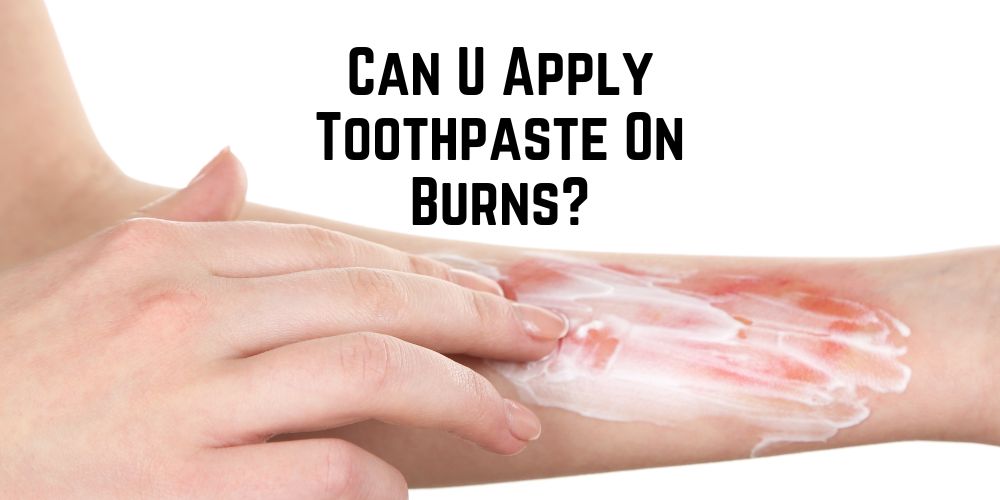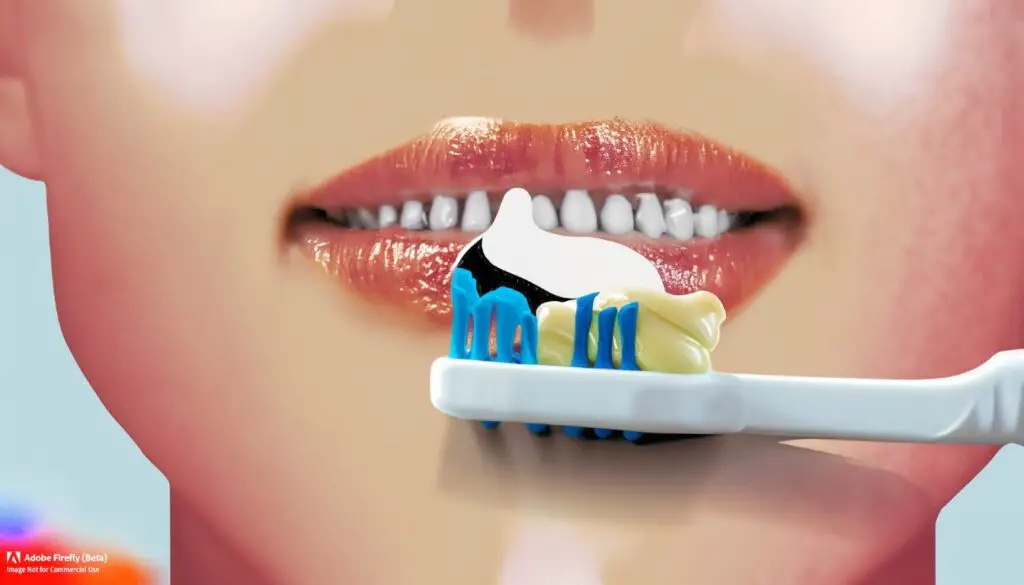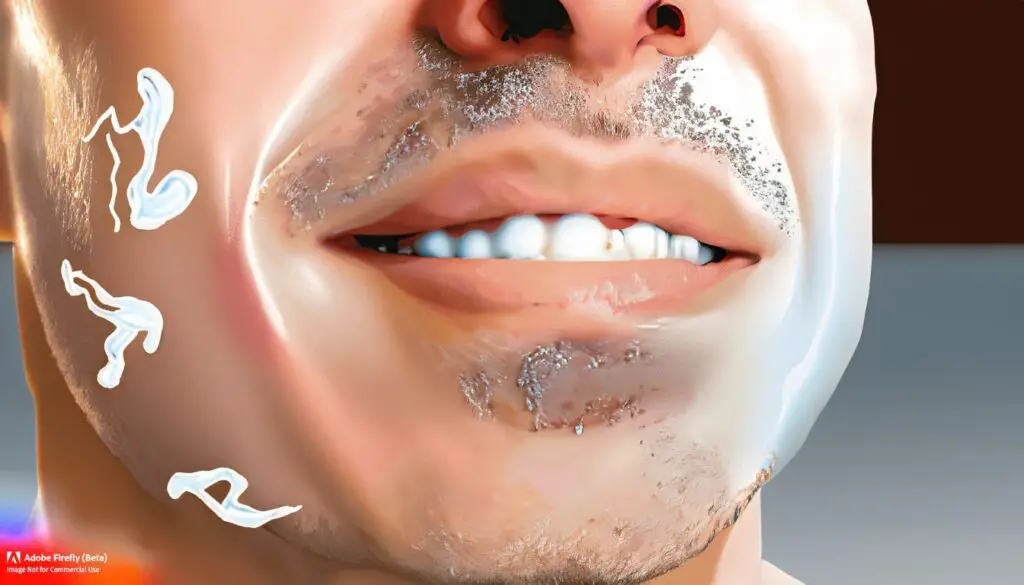
Burns and Cuts are common household injuries that happen almost everywhere with most people. Although a few over-the-counter burn-soothing ointments are available, people worldwide use home remedies and folk remedies more often. These remedies have been circulated for generations; therefore, we are still on them. One of the most popular home remedies for treating minor skin burns is ‘Applying Toothpaste.’
Table of Contents
But Is It Safe To Use Toothpaste On Burns?
As a popular belief, applying toothpaste on minor burns provide relief and aid in healing. Besides that, a study suggests that close to 60-70% of people apply toothpaste or honey to treat their burns. However, if we bring science into this picture, using toothpaste for burns may exacerbate the condition. Toothpaste is a dental and oral care product that should be used that way. Using toothpaste to treat burns, even minor ones, isn’t the best idea. Instead of improving the condition, toothpaste may reverse the effect making the burn on your skin even worse.
Here is more about Toothpaste on Burns and why it is bad. Join us as we learn more.
Toothpaste on Burns- Does it works?
Toothpaste formulas contain ingredients for preventing and treating oral health conditions. Toothpaste, however, isn’t ideal for applying on burns, cuts, or any other common home injury. Despite how popular a home remedy is, no scientific evidence supports the usage and effectiveness of toothpaste in healing burns. Several researches suggest that using toothpaste on a burn can do more harm than good.
It is evident and understood that toothpaste formulations aren’t soothing. Certain toothpaste types may have some cooling properties, but typically, they are meant for cleaning the teeth, preventing cavities, and fighting plaque and gum diseases. When addressing burns on the skin, toothpaste cannot help. Some of its ingredients (mint etc.) may offer temporary relief but can worsen the case later.
Toothpaste typically contains menthol, fluoride, and abrasives not designed for burn treatment. When applied to burnt skin, these ingredients can irritate the burn, further damaging and delaying healing. Not only that, but when you apply toothpaste on a burn, its layer creates a barrier to trap heat and thus prevents the burn from properly cooling down. This further increases the risk of infection.
For treating burns the right way, it is important to follow first aid protocols. It is always smarter to keep an over-the-counter burn relieving ointment at home instead of relying on remedies surfacing online and offline.
Risks of Applying Toothpaste on Burns
Applying toothpaste to burns carries several risks and potential complications. Here are the risks you must be aware of to prevent further damage:
- Toothpaste contains ingredients like menthol, fluoride, and abrasives that can irritate the burned skin, increasing pain and discomfort. Such components in toothpaste formulas exacerbate the already sensitive and damaged skin.
- Since the ingredients in toothpaste aren’t tailored to promote burn healing, it can delay the healing process. Toothpaste isn’t designed to provide the necessary environment for skin regeneration.
- Burns create open wounds, and applying toothpaste on them can introduce bacteria, leading to a risk of infection.
- Cooling the burn with water is a crucial first aid step. However, applying toothpaste will act as a barrier and thus preventing effective cooling and impeding heat reduction in the burned area. Using toothpaste on burns can damage the potential tissue layer on the skin.

Can I put Vaseline on a burn?
No, applying Vaseline or Petroleum Jelly on a burn isn’t recommended. Vaseline may act as an excellent moisturizer or for other skin concerns, but it isn’t suitable for treating burns.
When you apply Vaseline on a burn, it creates a barrier and traps heat. This barrier further prevents the burn from cooling down and healing. However, proper cooling down is a must for a burn to heal nicely. If not, the pain and damage to skin tissue may not move toward healing. Further, as our skin burns, it creates an open wound susceptible to infection. And when you apply Vaseline to it, it may create an occlusive environment that promotes bacterial growth and increases the risk of infection.
Since Vaseline isn’t designed to promote wound healing or it doesn’t boast an environment for burn recovery, it can delay recovery. Besides that, individuals who are sensitive or allergic to petroleum-based products may face adverse reactions upon applying Vaseline to burns.
Is Coconut Oil Good for burn wounds?
The effectiveness of Coconut oil in treating burn wounds is a matter of debate. Though using Coconut Oil to treat burn wounds effectively lacks scientific evidence, it may still show some benefits. Coconut oil is known for its moisturizing properties on the skin.
It helps hydrate and soften the skin around a healing burn wound. However, while applying coconut oil on burn wounds, one must know that even excessive moisture can hinder the healing process. Besides that, Coconut oil does not possess inherent cooling properties, which are crucial to reducing tissue damage on a burn.
Burn wounds are prone to infections. While coconut oil may have some antimicrobial properties, it isn’t a reliable disinfectant to provide that layer of sufficient protection against potential infections. Also, applying coconut oil excessively or inappropriately on a burn wound may interfere with the healing process. Burns require a clean, protected environment to heal effectively.
It is better to apply coconut oil on the skin once the burn wound is healed completely. After a burn wound has healed, it is important to keep the skin moisturized and protected. Coconut oil can be a good post-care product that can help maintain the skin’s moisture balance and minimize the risk of complications.

Can I Apply Honey On Minor Burn?
It may come out as a surprise, but honey is beneficial in treating minor burns. Honey is known for its natural antibacterial properties that soothe burns and support healing.
Here’s how to apply honey on a minor burn:
- First, clean your burned skin with cold water and dry it with a soft cotton cloth. Do not rub or add any pressure on the burn.
- Use a sterile applicator or clean hands and apply honey on the burn. Cover the entire burn with honey, though only a thin layer.
- Now, take a sterile non-stick dressing to cover the burn. Doing so is important to minimize the risk of infection. Reapply honey once or twice a day and change the dressing accordingly.
IMPORTANT NOTE: Use medical-grade or sterile honey specifically labelled for wound care only. Avoid honey that you use for eating or other purposes at home.
Also, it is important to learn that honey can benefit minor burns but not major ones. Also, when applying honey on burns, do monitor the healing progress. If the situation worsens or even if there is no sign of improvement for a few days, seek medical attention immediately.
How to Heal a Burn Fast Naturally at Home?
Proper first aid and medical attention are necessary for healing burns at home. While nothing can guarantee to speed up the healing process, some over-the-counter (OTC) remedies can aid in the natural healing of minor burns. For Instance:
- After the injury, cool the burn with cool running water for about 10-20 minutes. This will significantly minimize tissue damage.
- Use OTC burn cream or gels that contain ingredients like Benzocaine, Lidocaine or Aloe Vera. These ingredients are known to reduce inflammation, relieve pain and promote healing.
- Use Hydrogel Dressings to provide a moist environment that can help cool the burn and support healing. You can easily find such dressings in pharmacies or online in sheet or gel form.
- Use silicone-based dressings or sterile gauze to protect the burn from further damage. Keep changing the dressings regularly.
- Use over-the-counter pain relievers, like a burn, ibuprofen, acetaminophen, etc., to help alleviate pain and reduce inflammation associated with burns.
However, if the burn is severe, covers a large area, or has signs of infection, seek immediate medical attention.
Wrapping up…
Overall, Toothpaste should not be applied on burns. It is best to seek medical advice and follow proper burn care guidelines for effective healing and minimizing complications.

Hi, This is Lyn, I suffer from dental sensitivity for a very long time. PowerToothpaste.com is where I share my views of various toothpaste brands, along with tips on how to use toothpaste and what to look for when purchasing.
